
- Home
- Photography Tours
- Diary / Blog
- Galleries
- Foreign Trips
- Tasmania 2016
- NE Queensland 2016
- Western Alps 2016
- NE Spain 2016
- Australia's Wet Tropics 2015
- Australia's Top End 2015
- SW Australia 2015
- Switzerland 2015
- Andalucia 2015
- Belize 2015
- Australia 2014
- Switzerland 2014
- Belize 2014
- Bahama Islands 2014
- Switzerland 2013
- Ecuador 2012-2013
- Florida 2011-2012
- Vancouver Island 2011
- Australia 2010
- Peru 2008
- Bulgaria 2007
- Lesvos 2006
- California 2006
- New Zealand 2005
- Extremadura 2005
- Goa, India 2004
- The Gambia 2003
- About
April 2014
30th April 2014
Attenborough, Nottinghamshire
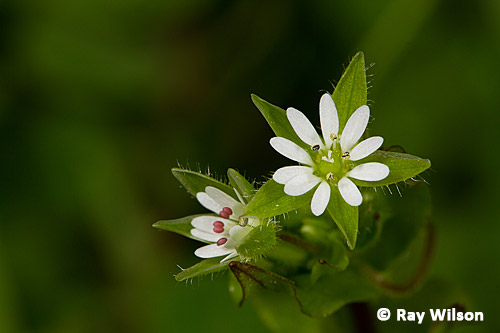
Common Chickweed (Stellaria media)
After arriving back in the UK from my 2 month trip to Belize I had to spend a lot of time in front of the computer catching up on image editing and other mundane jobs, so it wasn't until the last day of the month that I finally got back outside to do some photography.
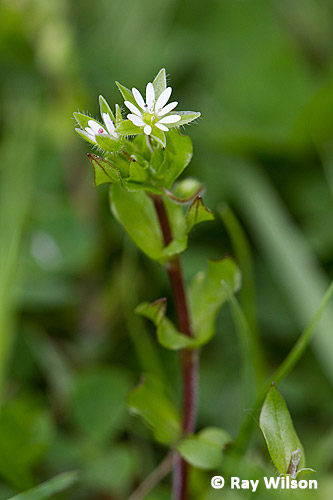
Common Chickweed (Stellaria media) |
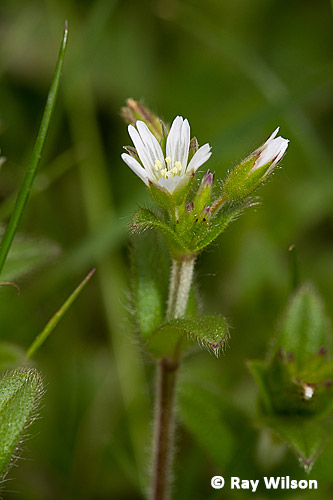
Common Mouse-ear (Cerastium fontanum) |
With spring under way, I spent a bright afternoon photographing the early-flowering "weeds" near my home. The wildflowers shown on this page all have a preference for growing in disturbed ground so are usually among the first colonisers of disturbed ground, such as that found along the edge of the recently finished flood defences at Attenborough.
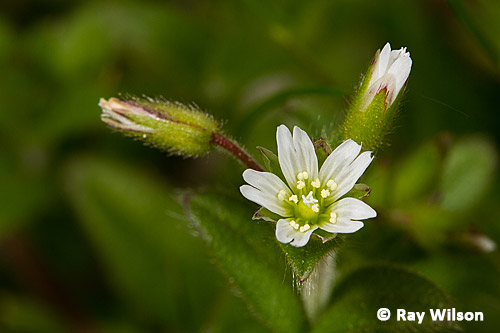
Common Mouse-ear (Cerastium fontanum)
Most of these plants are fairly small and unobtrusive. For example, the flowers of both Common Chickweed and Common Mouse-ear are not much more than half a centimetre across, but their delicate beauty becomes apparent when viewed in close-up as in the photos above.
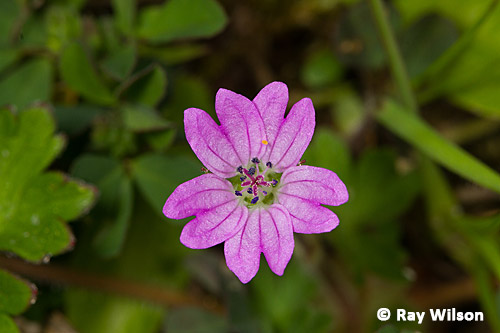
Dovesfoot Cranesbill (Geranium molle)
Slightly more obvious, due to their pink colour, the blooms of Dovesfoot Cranesbill and Common Vetch are still fairly small flowers being only about 1cm across.
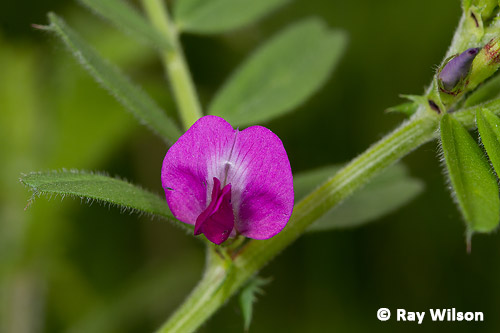
Common Vetch (Vicia sativa)
Wintercress prefers damp areas and there are no shortage of damp, disturbed areas on the reserve. Its leaves have historically been eaten as a vegetable, but are very bitter in taste.
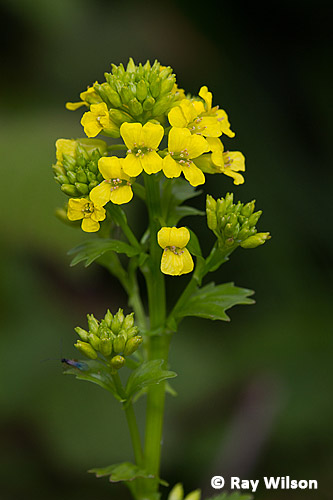
Wintercress (Barbarea vulgaris) |
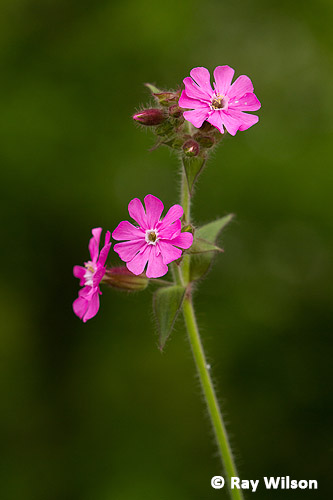
Red Campion (Silene dioica) |
This type of habitat is also the haunt of the Orange-tip butterfly whose prefered larval host plant are Cuckoo-flower in damp areas and Garlic Mustard in drier sites.
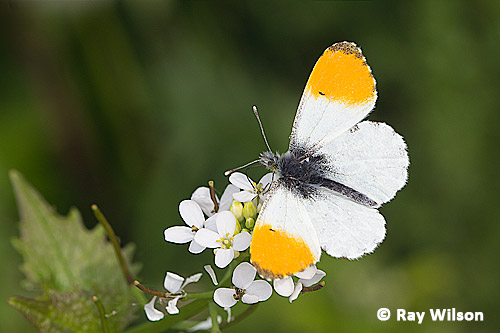
male Orange-tip (Anthocharis cardamines) feeding on a Garlic Mustard (Alliaria petiolata) flower
Female Orange-tips signify their readiness to mate by raising their abdomens at right-angles to their thorax. Oddly, older females that have already mated exhibit the same posture when they want to ward off the attentions of a male. The female in the photo below seemed to be in the latter category as there was a male hovering around her for about a minute before flying off without mating.
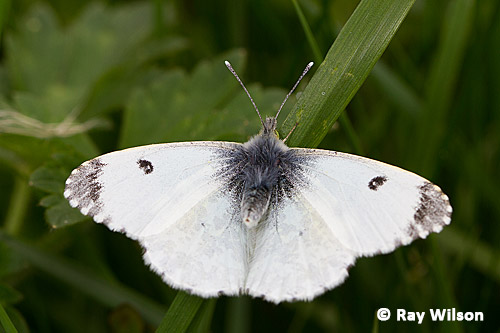
female Orange-tip (Anthocharis cardamines) exhibiting a raised abdomen posture to ward off the attentions of a male.
Ray Wilson owns the copyright of all images on this site.
They may not be used or copied in any form without prior written permission.
raywilsonphotography@googlemail.com